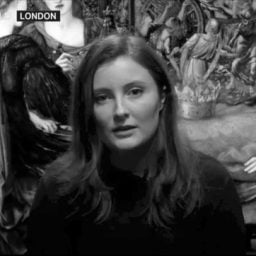Art & Tech
New Scanning Technology Reveals a Lost Painting by Pop Artist Pauline Boty
The overlooked painter was a larger-than-life pioneer of Pop Art before her tragic death in 1966.
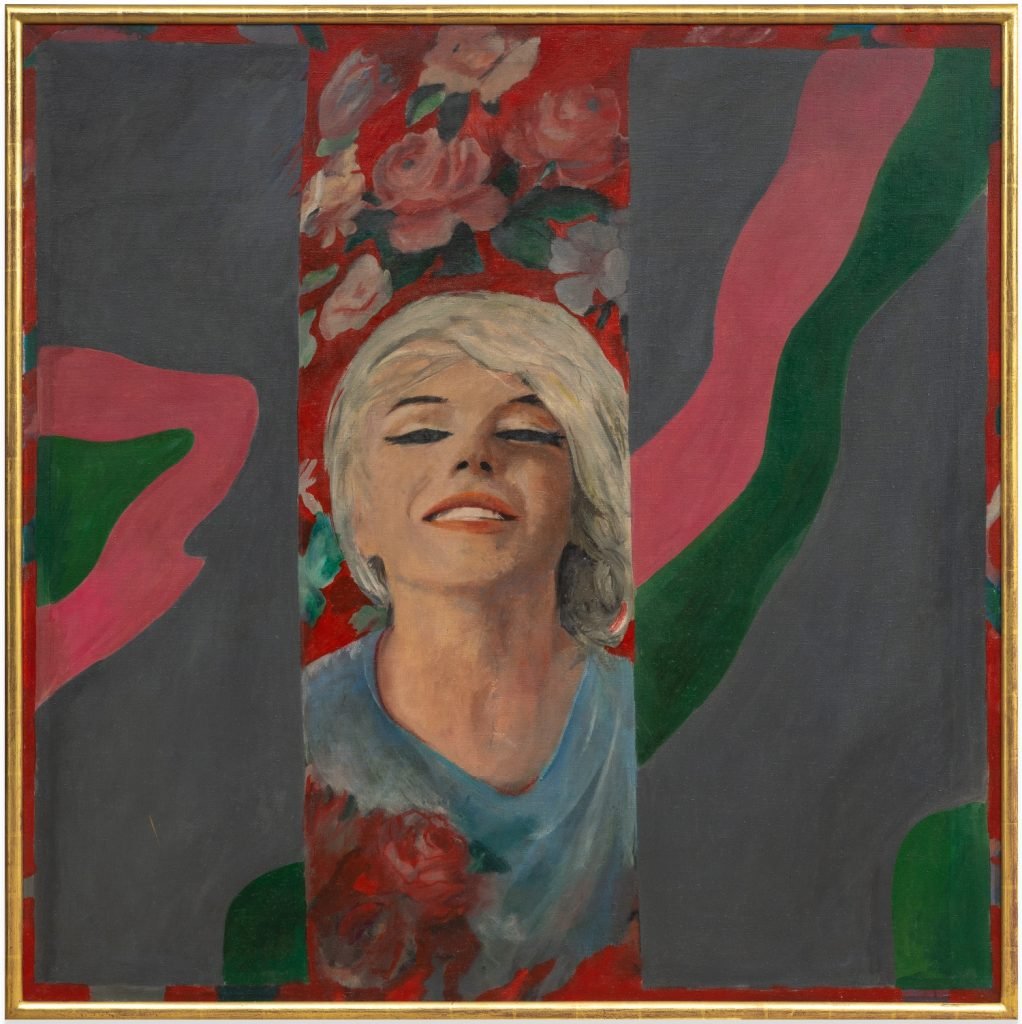
Although she was a larger-than-life character within the 1960s British Pop Art scene, painter Pauline Boty’s name has since fallen into obscurity. Critical attention has been lavished on her male peers, however, including Patrick Caulfield, Derek Boshier, Eduardo Paolozzi, and Richard Hamilton.
Excitement around Boty’s daring and diverse practice is now being revived by a solo exhibition at Gazelli Art House in London, which runs until February 24.
Boty, who also worked as a model and actor, exuded glamor and an irresistible self-assurance in her femininity that refused to be demeaned. She gained renown as an artist for approaching themes of gender, celebrity, and mass-consumerism with a mix of acerbic wit and youthful exuberance. These include her eye-catching painted collages It’s a Man’s World I, It’s a Man’s World II, and Countdown to Violence (all 1964), which colorfully depict disturbing geopolitical events like the assassination of John F. Kennedy and the Vietnam War.
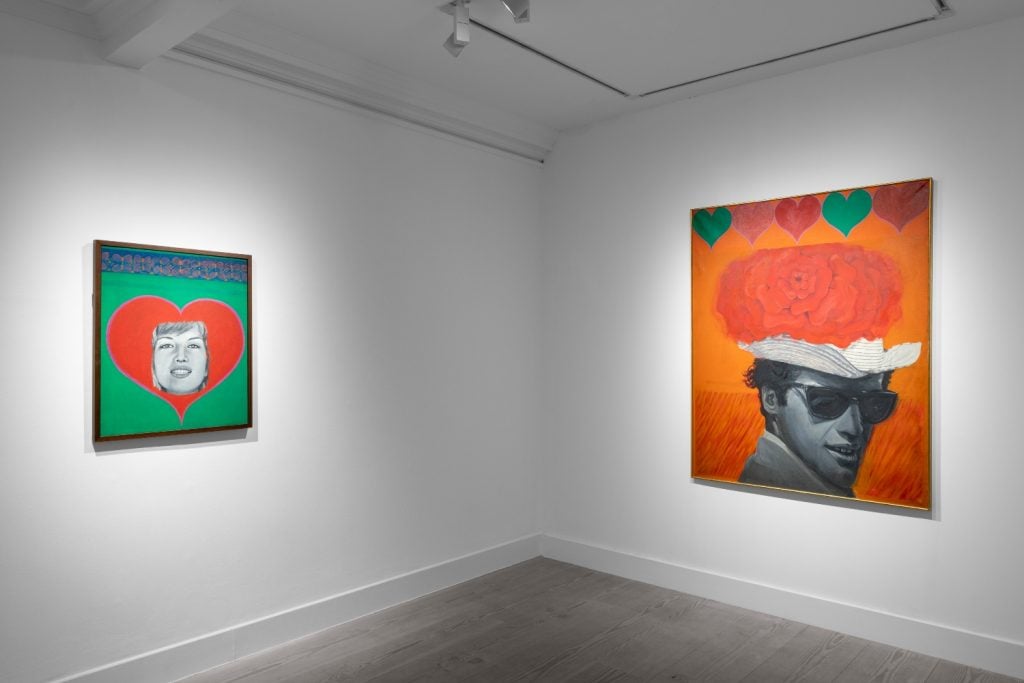
Installation view of “Pauline Boty: A Portrait” at Gazelli Art House in London. Features Monica Vitti with Heart (1963) and With Love to Jean-Paul Belmondo (1962). Photo: Denzil Guzel.
Tragically, Boty died at the age of 28 after refusing treatment for cancer while pregnant. Her work was kept in storage for several decades after her death until, slowly, her paintings began being reintroduced into group shows like the Barbican’s “Art in 60s London” in 1993. It wasn’t until 2013 that Boty received her first major institutional retrospective at Wolverhampton Art Gallery. In 2014, this traveled to Pallant House in Chichester, southern England.
As part of the exhibition at Gazelli Art House, art historian Dr. Sue Tate has presented new research on the artist, including a surprise revelation about one of Boty’s standout pieces, Colour Her Gone (1962), on loan from Wolverhampton Art Gallery.
This lively portrait of Marilyn Monroe is a far cry from Andy Warhol’s static image of a sad-eyed starlet that was swiftly mass-reproduced. Under Boty’s brush, Monroe is almost unrecognizable with her head thrown back, windswept hair and wide smile. She is framed by decorative floral motifs and panels with swirling abstract patterns that create a collaged effect.
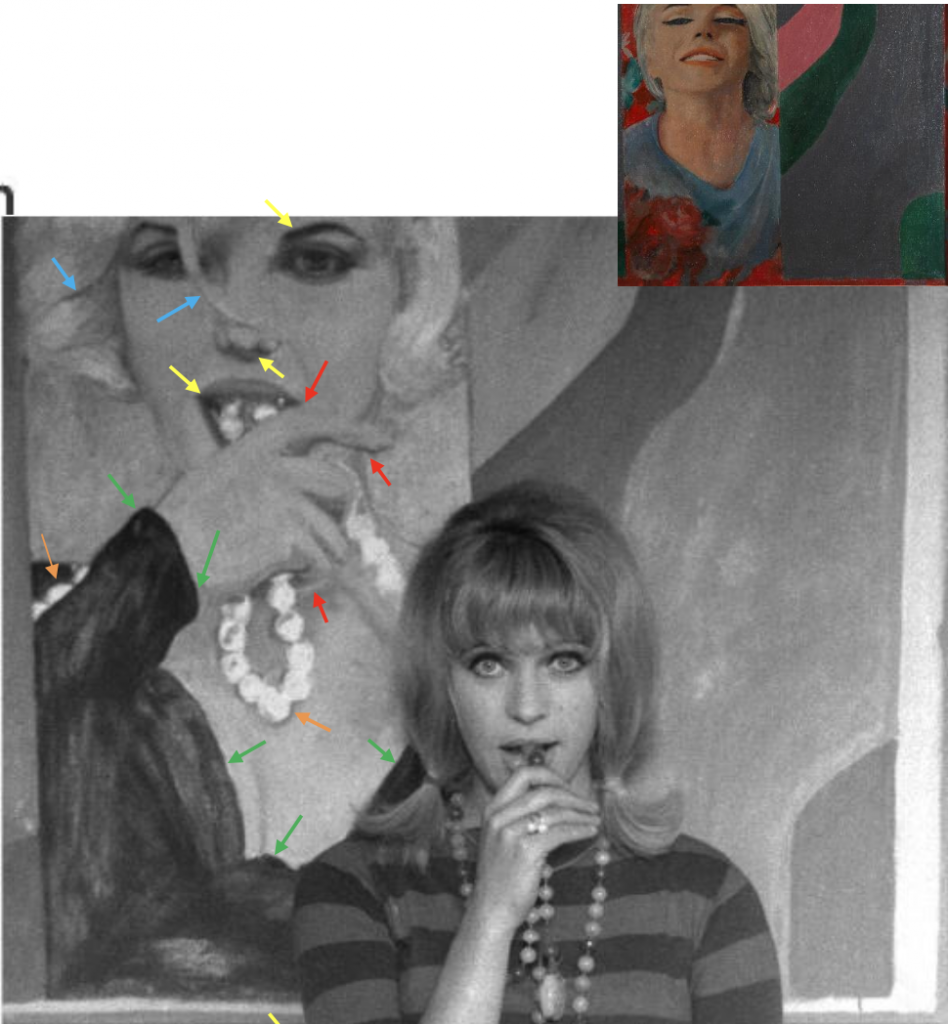
Illustrations from report on research into Pauline Boty, Colour Her Gone (1962) screenshotted with permission from Wolverhampton Art Gallery. Photo of Boty with Marilyn and Beads is reproduced courtesy of © John Aston 1962, John Aston Estate.
Tate and her colleague Christopher Gregory had long suspected that beneath the surface there lurked an earlier painting, Marilyn with Beads, a work only known thanks to an archival photograph of Boty in front of the canvas that was taken by John Aston in 1962.
That lost painting had the same flat background marked by whirling ribbons of color that had made its way into the final composition of Colour Her Gone.
A reflectogram study of the painting ordered by Wolverhampton Art Gallery and Gazelli Art House that was able to confirm Tate’s hunch. The scan revealed extensive alterations made to the painting including clear traces of the lost portrait of Marilyn hidden beneath the surface.
“Here as in other paintings, Boty has radically reworked a composition until she had clinched the image that expressed exactly what she wanted to say,” Tate said.
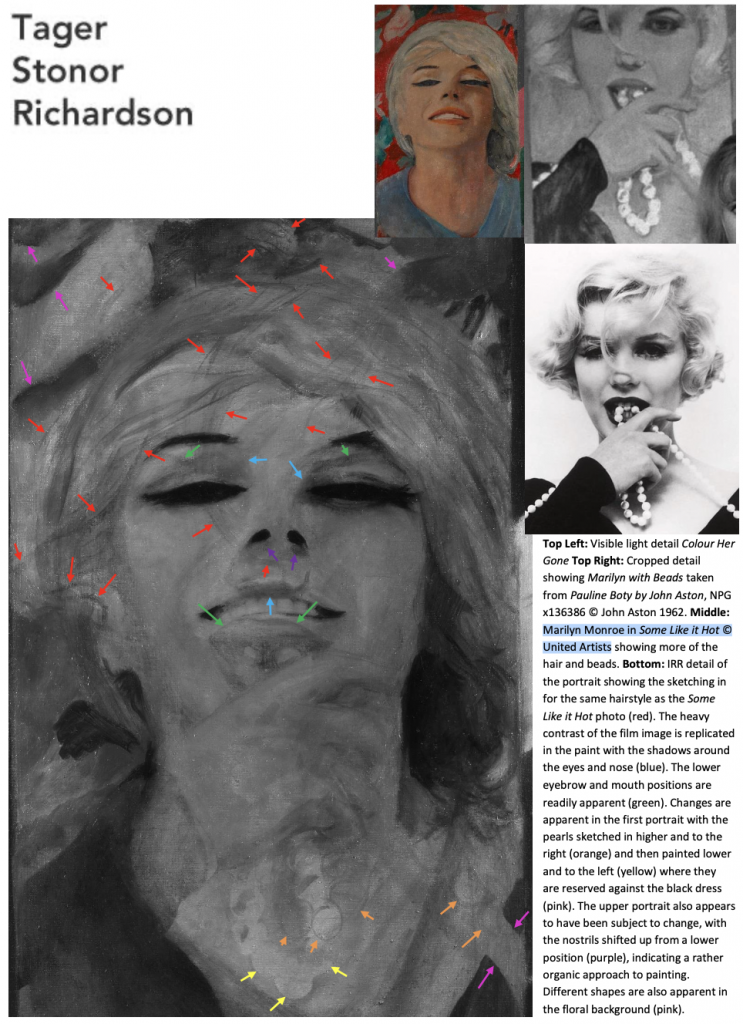
Illustrations from report on research into Pauline Boty, Colour Her Gone (1962) screenshotted with permission from Wolverhampton Art Gallery.
Interestingly, the original Marilyn with Beads is a much more stereotypically titillating image of Monroe, which drew directly from a promotional photo of the actress for the film Some Like it Hot (1959). Boty eventually seems to have changed her mind about how best to represent the celebrity, opting instead for an unexpectedly natural, less idol-like depiction.
Thanks to new scanning technologies, art historians have made major leaps in bringing to light unknown masterpieces that were painted over. The discovery shows that Boty’s approach, which has according to Tate been historically dismissed as “slapdash,” was actually highly considered, with complex compositions built up over a long time.
“Pauline Boty: A Portrait” is on at Gazelli Art House in London until February 24, 2024.

